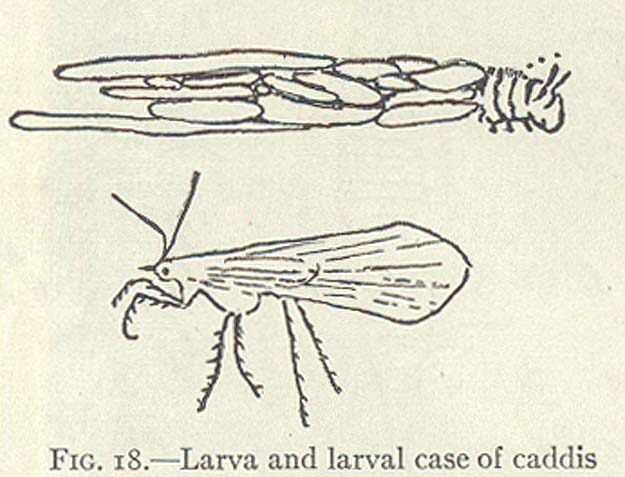Elliot Rowland Downing, A source book of biological nature-study, The Universty of Chicago Press, (1919), 1922, pp. 32-33.
The caddis fly.- Of all aquatic larvae the most remarkable one is that constructor of curious log cabins and stone houses, the larva of the caddis fly (Fig. 18). Sweeping with the net in both streams and pond will bring to the surface numerous representatives of this group. The house is an open tube, usually straight, sometimes curved or even coiled. Some sorts adopt a length of hollow reed for habitation ; others fasten bits of sick and twig together by means of silk ; while still cement bits of stone into very perfect mosaics , and so forma protective covering. The larva carries his house with him and when disturbed safely withdraws into it. Hold one of these inhabited tubes on your hand for a moment and soon the animal will poke his head and legs out, cognizant that his customary watery environment is changed. The larva feeds on aquatic plants, and as it increases in size it enlarges it dwelling or adopts a new one.
